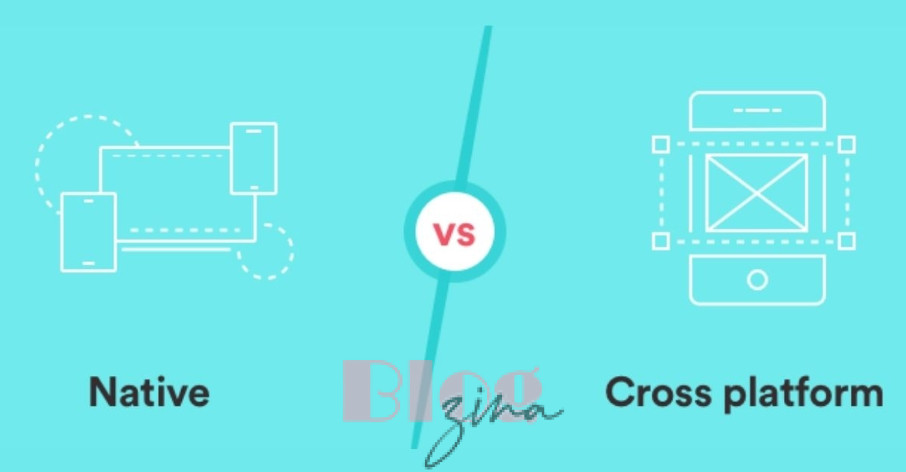
In the mobile first world today, businesses and developers have to make a critical choice while developing Android applications: whether they should go for cross-platform development tools or opt for native Android development tools present online. This decision has significant implications on the time of development, cost, performance and user experience. In this exhaustive analysis, we will delve into cross-platform versus native android development tools; evaluate their pros and cons as well as arm developers and organizations with insights about how to make intelligent choices in line with project needs.
Understanding Cross-Platform Development Tools
Cross-platform development tools enable developers to create Android applications that can run on different platforms like iOS, web etc. using one code base. Such tools are often based on technologies like React Native, Xamarin Flutter or Ionic which allow writing of code once then deploy across multiple platforms. There are several advantages of cross-platform development such as:
1. Code Reusability:
One advantage of cross-platform is that it allows for code re-usability. Developers can write a single codebase using languages like JavaScript, C#, or Dart to create applications that work on both Android platform as well as the iOS platform which helps in reducing time wastage during creation process and lowering costs hence faster product launch.
2. Lower Development Costs:
By utilizing cross-platform development tools companies not only save money but also build apps for multiple platforms with a single skillset, team and codebase hence no need of hiring separate teams of android and iOS developers reducing rates per hour or month significantly simplifies workflows mitigates overall project costs further apart from offering free or low-cost licensing alternatives.
3. Easier Maintenance and Updates:
Updating and maintaining android applications may require much time especially when dealing with many codes bases across numerous platforms Cross-platform eliminates these difficulties through allowing changes in just one set of code be replicated across all systems at once thus streamlining maintenance procedures ensuring uniformity across different setups minimizing chances for bugs or errors.
Exploring Native Android Development Tools
Alternatively, native android development tools are used for building applications specifically for the android platform using java and/or kotlin, and native development frameworks such as android studio and Google material design. Native development has a number of advantages that include:
1. Superior Performance and User Experience:
Native Android applications are usually optimized for higher performance and user experience because they utilize unique APIs, libraries and UI components of the platform to provide responsive, fast and visually pleasing interfaces. Developers can create rich, immersive experiences tailored to the Android platform by having access to features such as device specific ones like GPS, camera and sensors.
2. Seamless Integration with Android Ecosystem:
The other benefit is that native android development tools integrate well within the greater android ecosystem which includes google play store, google play services plus other google APIs along with services.This means that developers can take advantage of functionalities like push notifications; in-app purchases; location based services or google maps among others making their apps more functional hence improving user engagement as well as retention rates.
3. Greater Flexibility and Customization:
Native development tools are more flexible and customizable than cross-platform development tools, allowing developers to tweak their apps for unique performance, design and functionality needs. These native development tools provide direct access to platform specific APIs and libraries that can optimize the performance of applications, integrate complex features, and seamlessly use other services or applications within the Android application.
Cross-Platform vs. Native Development Tools in Android: A Comparative Analysis
1. Development Time and Cost:
The ability to reuse code across platforms and streamline workflows makes cross-platform development tools a big time saver compared to native ones. Nevertheless, using native development tools may require additional time and resources at the beginning but eventually pay off with better performance along with flexibility and customization options. Developers should consider these aspects alongside their projects’ requirements as well as budget constraints when picking an approach that suits them best.
2. Performance and User Experience:
Native android applications have always had superior performance capabilities compared to their cross-platform counterparts due to utilization of platform-specific optimizations as well as UI components. However, there are still certain cases where these types of productivity tools lag behind such platforms in practice like graphical intense gaming programs or multimedia based systems.
3. Access to Platform-Specific Features:
The native Android Development Tools allows developers to get full access into all platform-specific features and APIs hence utilize those Android platform’s capabilities completely in developing their own apps unlike Cross-Platform Development Tools which might provide some plugins or wrappers for accessing such features but never at same level integration-wise nor functionalities-wise with natively programmed ones.
4. Maintenance and Updates:
By allowing developers make changes once on the codebase then deploy updates across different platforms these cross-platform development tools make maintenance easier compared with how it is done using such other techniques as; Native Development Tools which demand separate codebases plus updates for each individual platform thereby increasing maintenance overheads/complexity particular in context of large-scale applications frequently requiring updating.
5. Support for Emerging Technologies:
Both Cross-Platform and native Android development tools continue to evolve in order to embrace the emerging trends and technologies within the mobile application field. To exemplify, cross-platform frameworks like React Native and Flutter keep on enhancing their support for native functionalities, performance optimization and integration with third party libraries/services. Similarly, there is a paradigm shift among native Android development tools including Kotlin and Android Studio which are adopting modern methods such as Jetpack Compose in UI development, Kotlin Multiplatform for sharing code across platforms, or Android Architecture Components that assist in building resilient maintainable applications.
6. Community and Ecosystem:
The strength of a development ecosystem and community support can significantly impact the success and adoption of development tools. For instance React Native and Flutter frameworks have vibrant communities of developers, contributors, or even enthusiasts who actively participate in their developments including documentation; these communities offer invaluable resources like tutorials; plugins; or third-party libraries thereby extending framework’s functionality while assisting developers to overcome challenges thus boosting their pace of work. In similar vein, Google’s comprehensive documentation; official guides; sample codes; developer events all aimed at equipping developers with the necessary skills required when building quality android applications since they belong to the ecosystem surrounding native android development.
7. Flexibility and Scalability:
Scalability and flexibility are other determinants that can help one choose between cross-platform and native Android development tools. Cross-platform development tools possess more elasticity due to code reuse, being deployable on multiple platforms and rapid prototyping. On the other hand, native development tools have more flexibility and scalability in terms of performance optimization, customizable options as well as support for platform-specific features and APIs. Thus depending on your project’s requirements, you may need to give priority to either flexibility or scalability so that your app meets up with user’s needs as well as business goals.
8. Market Trends and Industry Adoption:
When evaluating the cross-platform or native android development tools, market trends and industry adoption should be taken into consideration. For instance, in recent years flutter cross-platform frameworks such as React Native have gained popularity because they are easy-to-use, come along with performance improvements and support for modern development practices. However, despite all these breakthroughs in mobile app development landscape; native Android development continues to dominate this sector. Consequently most renowned firms still choose empowered by their enormous knowledge about Android mobile application programming language while disregarding all latest developments.
Conclusion: Choosing the Right Approach for Your Project
In conclusion, both cross-platform and native Android development tools offer distinct advantages and trade-offs, and the choice between them depends on factors such as project requirements, budget constraints, performance considerations, and long-term objectives. Developers and organizations should carefully evaluate these factors and choose the approach that best aligns with their goals and priorities.
For projects that require rapid development, cost-effectiveness, and code reusability, cross-platform development tools may be the preferred choice. However, for applications that demand superior performance, native user experience, and seamless integration with the Android ecosystem, native development tools offer unparalleled flexibility and customization options.
Ultimately, the key to success lies in selecting the right development approach for your project, leveraging the strengths of each approach, and delivering high-quality Android applications that delight users, drive engagement, and achieve your business objectives. With the right tools, technologies, and expertise, developers can maximize the potential of the Android platform and create innovative, impactful applications that stand out in a crowded marketplace.


